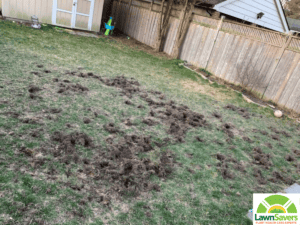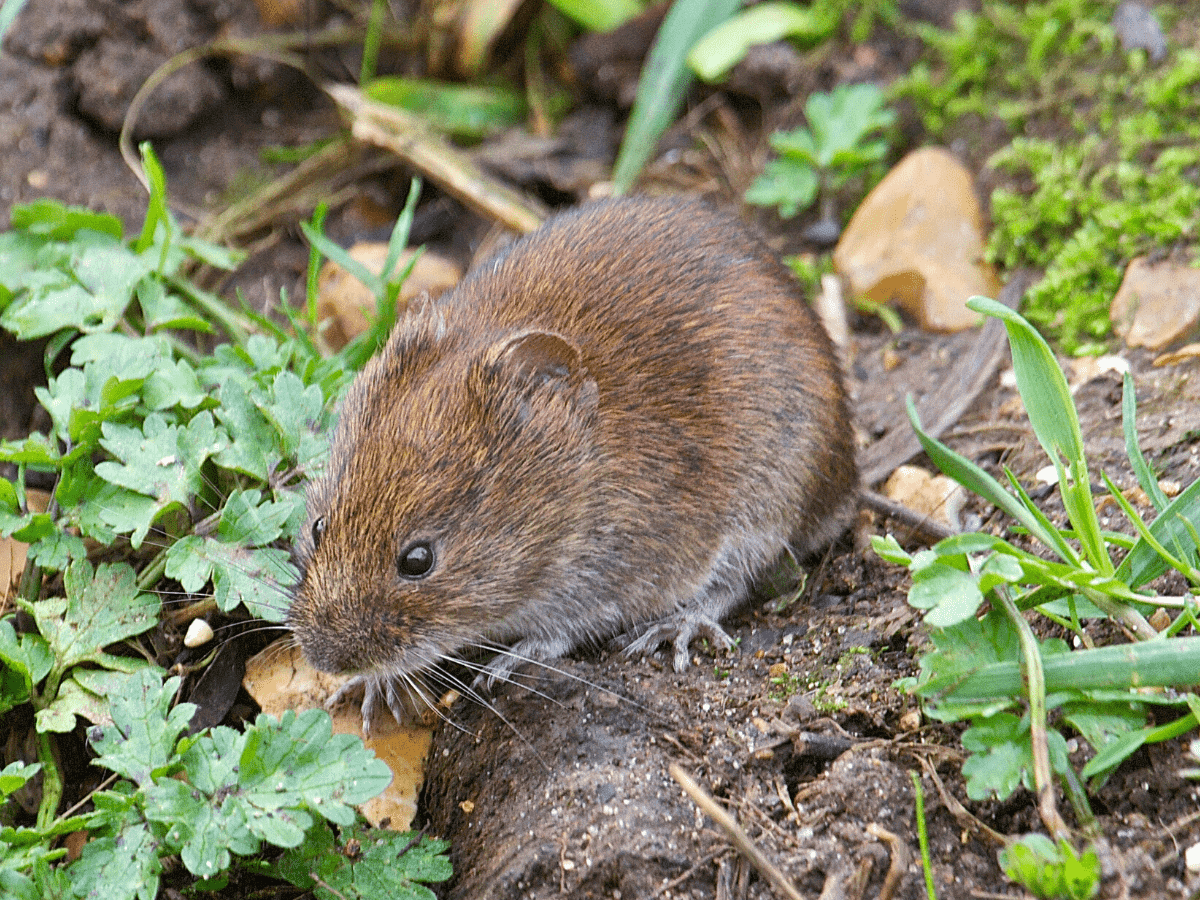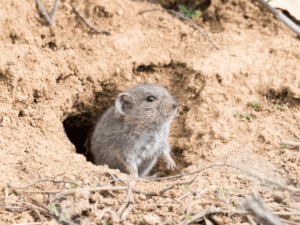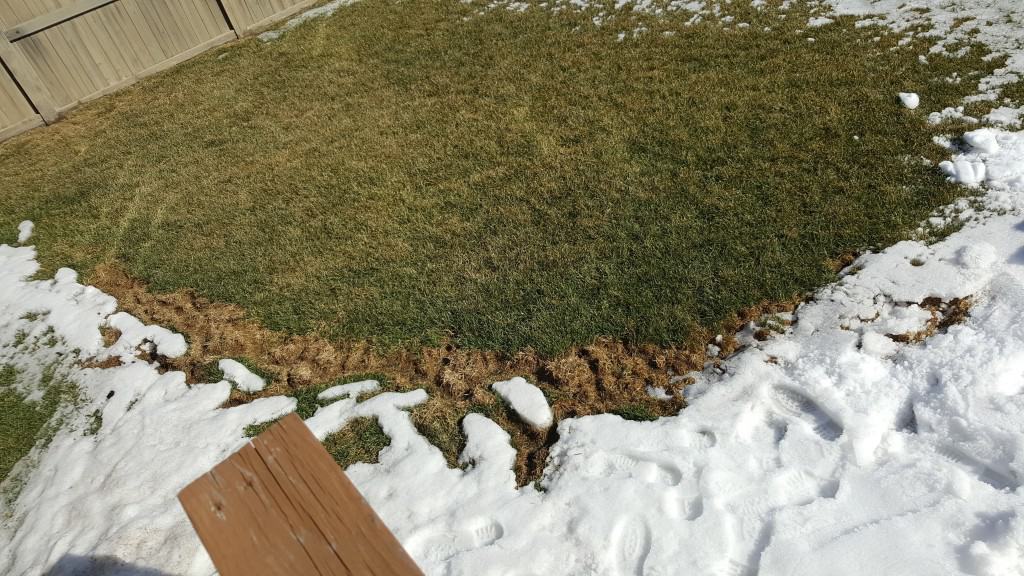Help! What’s Ripping Up My Lawn? What Do I Do?
When Spring comes and the snow melts, everything’s supposed to be coming up roses, Right? Well if you’re like most people as soon as the snow recedes – it reveals big problems on your lawn!
The lawn experts here at LawnSavers hear a lot from people finding a web of matted down grass crisscrossing their lawns like a highway system. Many are quick to assume it’s white grubs or blame other insects, either for directly killing the grass or attracting burrowing animals. Some homeowners are seriously upset about the ‘devastation’.
Highways or runways are a good name for the tracks, usually 2-3 inches wide, since what you are seeing on your lawn is the under-snow travel tunnels of Voles. Voles are tiny rodents, usually found in fields, ravines, and newly constructed areas. People often mistake them for moles as they look similar. FAQ Follows Article
 What is the Difference Between Moles and Voles?
What is the Difference Between Moles and Voles?
Simply put, Moles burrow in tunnels- typically underground and leave behind mounds of soil as evidence. Moles are insect eaters where voles are vegetarians and only eat plant parts, so there is no way they’d even be interested in grubs. Voles also typically create tunnels throughout the grass, and they eat stems and leaves from plants. Voles use your grass food and shelter under the snow.
The tracks voles create look kind of like lightning and are typically bordered with dead grass that has been nested in by the voles. They can be a particular problem when we have a winter with a longer period of snow than normal. The snow acts as an insulation blanket for these animals. The voles will burrow underneath and build up their tunnels with thatch and grass from your lawn. Once the snow is gone, the voles head back to the fields and ravines where it is easier to hide, abandoning the paths they’ve stomped down.
So what to do about these tracks in your yard? Normally, the roots will still be intact. A nice vigorous raking with a leaf or fan rake – something you should be doing after the thaw anyway – to get the grass to stand up again, along with your regular spring shot of pick-me-up fertilizer will erase those tracks fast. If your tracks are severe, add a little seed, but be sure to use a seed variety that will properly blend in with your existing lawn.
Your lawn will survive. Once the grass gets growing again, you’ll find that it will repair most of the damage on its own, if there are still some bare patches, you may need to spot seed those areas. (see: lawn repair) or call us for more information.
What to do if critters have been digging up your lawn:
If your lawn is more severely dug up by animals, if the grass has been upended and looks like its been torn up by a roto-tiller, then chances are YOU’VE GOT GRUBS! 
This problem is caused not by voles but by raccoons, skunks and squirrels digging up your lawn for this fine delicacy! These animals are creatures of habit and will normally move on past your house in time. The problem is you have a little more work to do to fix this situation. However, there is nothing you can do to get rid of them right now, apart from a few small tips to make the job easier (and less expensive later). Grubs eat the roots of your lawn in the fall causing considerable damage.
- Replace the torn up grass into its rightful home then ‘Step on it’! & keep it moist.
- Try to deter the critters by scattering mothballs around the yard or animal repellent- both are available at your local Canadian Tire store. (Do not use inhumane methods like cayenne pepper)
- Call LawnSavers right away to book your Nematode Grub treatment for early fall. Nematodes are applied according to weather conditions and should be done proactively each year to keep their populations high enough to control grubs as effectively as possible.
- Order a Scarecrow Sprinkler from LawnSavers today (we ship direct)
- Prepare to do some lawn repair in mid-May (see: lawn repair), or give us a call for a free estimate.
- Pour yourself a cold drink, sit out in the sun and relax!
Contact LawnSavers For Help Dealing With Your Damaged Lawn
Call LawnSavers when you are looking for the best lawn service company near you to help you deal with grass that has been damaged by unwanted critters like voles. We’ll provide you with a free estimate for our lawn care services to help you take care of the issues that could be plaguing your yard. We also have many beneficial lawn services, such as custom over-seeding, which will introduce your lawn to a much hardier variety of seeds. These are bred to withstand higher temperatures, need less water, and resist insects like chinch bug!
Contact us today if you have any lawn maintenance questions or to set up an initial assessment. 1-888-503-5296
Check out what our clients have to say about us:
“My lawn looks fantastic. The employees are prompt and professional. These guys are experts.”
Andre Lalonde
Rating 5/5 ⭐⭐⭐⭐⭐
And read more of our 1000+ reviews on Google and HomeStars
FAQ about moles and voles in your lawn:
- 1. What’s the difference between moles and voles?
- A mole is like a little miner, digging tunnels underground for a living. Voles, on the other hand, are like the bad tenants who only mess up the surface of your lawn. Remember, moles are meat-lovers (they eat grubs), while voles are strict vegetarians.
- 2. Do voles indicate a grub problem in my lawn?
- Nope, voles aren’t in it for the grubs. They’re more into grass and plant roots. It’s like mistaking a vegetarian for a steak-lover. So, treating your lawn for grubs won’t deter voles.
- 3. How do I know if the damage is from voles?
- Vole damage looks like someone threw a tiny lawn party on the surface, with narrow runways and no deep tunnels. It’s as if they’re playing mini-golf on your lawn.
- 4. Can snow lead to more vole activity?
- Absolutely! Snow is like a cozy blanket for voles, giving them the perfect cover to create their surface runways. It’s their version of a winter wonderland.
- 5. What’s the best way to repair vole damage?
- A light raking and some TLC (tender lawn care) should do the trick. Throw in a bit of fertilizer and grass seed if needed. It’s like giving your lawn a nice spa treatment after a rough day.
- 6. Will getting rid of grubs prevent vole damage?
- Not really. That’s like trying to stop a cat from scratching by removing all the mice. Different problems, different solutions.
- 7. Are there any effective home remedies for voles?
- While creativity in the kitchen is great, your lawn isn’t a testing ground for home concoctions. It’s best to stick to proven lawn care practices and don’t waste precious time.









